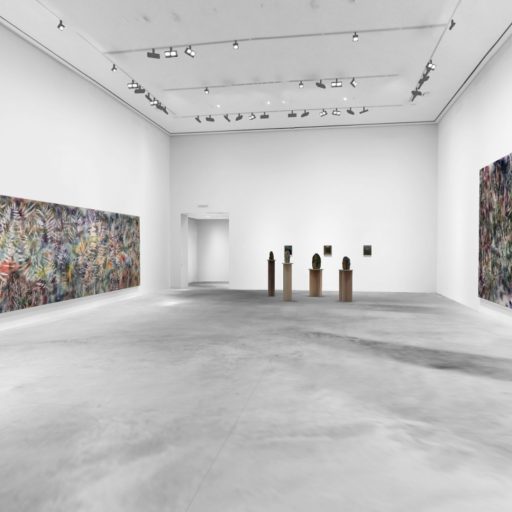

The context of the Neoplastic Room changed in 2008, when the collections of modern and contemporary art were moved to ms2, a nineteenth century weaving mill turned into an exhibition space of the Muzeum Sztuki. The room, after long discussions concerning possible moving it to the 20th and 21st Century Art Collection, remained in the building for which Strzemiński had originally designed it. Thus, it ceased to be the centre of the Muzeum collection. In return, it became a catalyst and a reference point for the activities of other artists. Through such a formula of having a dialogue with the work of the leading animator of the Polish avant-garde, artists have been able to creatively develop and modernize his legacy, as well as direct our attention to those meanings of his work that were previously unnoticed.
The Open Composition project premiered in 2010. Since then, the Neoplastic Room which used to be the centre of the collection of Muzeum Sztuki in Łódź, has become a catalyst and a reference point for activities of contemporary artists. At the current stage of the exhibition, the works of the
a.r.group have returned to the Neoplastic Room with which they are historically associated. Additionally, the dialogue is held between the Room or, more broadly, between the art of Strzemiński and Kobro, and the works of Daniel Buren, Liam Gillick, Monika Sosnowska and Céline Condorelli. Albeit not inspired by the Room, other artists’ sculptures and installations exhibited as part of the project focus on themes that are encapsulated in the Room and relate to corporality and modernist ideologies involved in actively shaping the living space. These aspects of the presence of the human body in an ideologized space are revealed and brought forward in the works by Magdalena Abakanowicz, Henryk Morel, Kitty Kraus, Oskar Dawicki, Roman Stańczak and Koji Kamoji. All of them create a catalogue of relations that take place between topography, human body and the experience of presence, absence, filling, and displacement.










